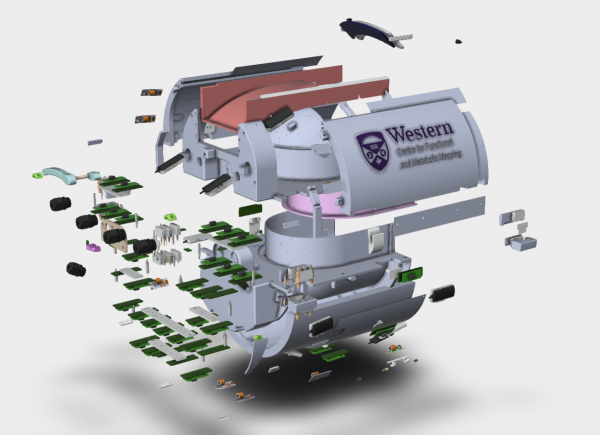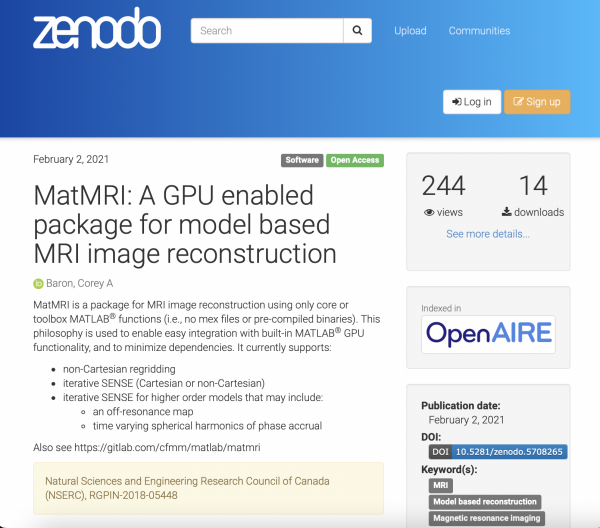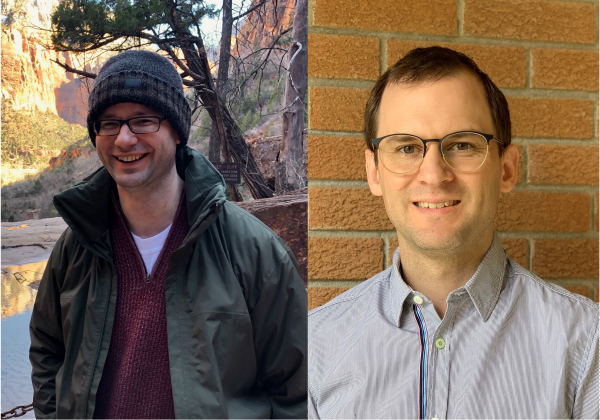By Mathieu Boudreau

This MRM Highlights Reproducible Research Insights interview is with Kyle Gilbert and Corey Baron, researchers at the Centre for Functional and Metabolic Mapping (CFMM) at Western University in London, Ontario. Their paper is entitled “Integration of an RF coil and commercial field camera for ultrahigh-field MRI”. It was chosen because of the exemplary reproducible research practices implemented by the authors, who shared their coil design CAD file and performance files and their image reconstruction code.
To learn more, check out our recent MRM Highlights Q&A interview with them.
General questions
1. Why did you choose to share your code/data?
Over the last handful of years, we have been putting nearly all our published coil designs, code, and manuscript data online. We feel that this accelerates scientific development, and we have benefitted from public data/code posted by others and would like to give back to the MRI community. We also believe sharing our code/data is important for accountability when using public funds for research.
2. What is your lab or institutional policy on sharing research code and data?
While we have no set policy, we try to make as much of the pertinent data/code publicly available as is feasible. We typically place code in publicly shared git repositories and data in public repositories such as OSF (that can be referenced with a DOI). We have also started to post most articles as preprints to allow others to read about our research sooner and ensure it is not behind a paywall. All of the CFMM’s open-source hardware and software projects are listed on the CFMM website: https://cfmm.uwo.ca/resources/open_source_projects/index.html. Our in-house software for expanded encoding model iterative reconstructions is located at https://zenodo.org/record/4495477#.YsRy2OzMLDI and https://gitlab.com/cfmm/matlab/matmri.

3. At what stage did you decide to share your files/data? Is there anything you wish you had known or done sooner, prior to submitting your manuscript to the journal?
We begin projects under the assumption that all data (CAD drawings, imaging data, software pipelines) will be made publicly available. Knowing from the beginning that there will be public accountability helps to motivate good practices in organizing/commenting data and code.
4. How do you think we might encourage researchers in the MRI community to contribute more open-source content along with their research papers?
We believe the expectation should come from funding sources, which is what we are already beginning to see with open access publishing. Also, journals could more strongly mandate the inclusion of data and code with publications, as opposed to just encouraging it. We also need to see a bit of a culture shift — a movement away from competitive mindsets and the focus on glam journals, and instead greater focus on collaboration and making science accessible both between researchers and to the public. While shifting the culture is not an easy task, improving awareness through focused sessions at conferences, workshops, and publications like MRM Highlights can help to convince the next generations of scientists of the benefits of open science.
Questions about the specific reproducible research habit
1. What are CAD files, and why was it a priority for you to share the CAD file of your coil setup along with your paper?
CAD files are computer-aided design files, which are 3D drawings (renderings). In our case, they are the 3D drawings of the coil housing and most of the constituent components. With 3D printing becoming commonplace, CAD drawings can now be used to easily reproduce parts. Even if other coil designers do not use them directly, hopefully our CAD drawings might give them ideas to develop that improve upon our work, for the benefit of the entire MRI community.
2. What advice do you have for people who would like to share sufficient details and open-source content about their MR hardware to make them replicable?
I would suggest sharing as much detail as you possibly can, including CAD files, EM simulation files, circuit schematics, bill of materials with product numbers, and tips and tricks that may not have made it into a manuscript, etc., and to make them easily found. Software analysis tools and pipelines are also key. While the raw data is helpful, oftentimes the post-processing tools are also needed in order to fully reproduce research.

3. Are you aware of any community resources or websites focused on open-source MRI hardware tools and content?
A great resource that encourages submissions of open-source hardware is https://www.opensourceimaging.org/.
4. Are there any other reproducible research habits that you didn’t use for this paper but might be interested in trying in the future?
We would like to start tracking usage of our public repositories to see what types of data/code are most useful to people — this way we can tailor future open-source projects to have the most impact.




